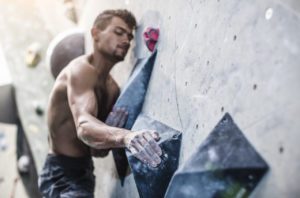What is Overtraining Syndrome in Climbing?
Overtraining Syndrome effectively eliminates a person's ability to progress in strength, but what defines this debilitating condition?

Those who train for climbing will fatigue, but overtraining pushes beyond tiredness and into diminishing returns. Unfortunately, determining whether you are overtraining, or simply tired is not easy in a skill-based sport such as climbing. Today, we look at research to better guide our training.
Overreaching Versus Overtraining
First, overtraining and overreaching are two similar, but different conditions worth separating. According to Jeffrey Kreher of the Massachusetts General Hospital’s Department of Orthopaedics, “Overreaching is a state of excessive volume or intensity of exercise resulting in decreased sport-specific athletic performance.” Kreher also states that overreaching is more common than overtraining with an incidence rate ranging up to 60% for overreaching in athletes.
Overtraining, by comparison, is less prevalent. “OTS (overtraining syndrome) is a very specific and severe condition when overtraining without adequate rest and recovery leads to performance decrements that last >2–3 months coupled with a mood disturbance,” Kreher said. A syndrome is a description of a collection of symptoms. This length of the decrements and the significant mood disturbance separate these two syndromes.
To strengthen, climbers must push themselves beyond their current limits to adapt to a higher load of stress. Functional overreaching, also known as short-term overreaching, occurs after intense exercise. The body undergoes short-term detriment, after which, it strengthens and realizes a performance increase. This is how we progress.
Non-Functional overreaching occurs over weeks or months and causes long-scale detriment, but the body heals after adequate rest. In these cases, the time frame is long enough that the training result is negative due to symptoms and loss of training time.
Overtraining syndrome takes place over months and is damaging enough to potentially end athletic careers. Diagnosing OTS is difficult because there is not an appropriate marker that separates it from overreaching. Although a person can look at several biomarkers found here, in the end, the self-diagnosing athlete may have more success in monitoring their condition through the lens of parasympathetic and sympathetic alterations to mood.
Symptoms
Parasympathetic alterations to your condition look like the following: fatigue, depression, bradycardia, and motivation. These symptoms are most found in aerobic sports. Climbing is largely an anaerobic sport. At the sport climbing level, longer routes edge further into a climber’s aerobic capacity, but even sport routes present as short bursts of anaerobic exercise. Still, these symptoms may be relatable to a sport climber, or an athlete undergoing long-duration training stress.
The sympathetic alterations may be more obviously relatable to boulderers as these symptoms are found more commonly in anaerobic sports. Bouldering is predominantly anaerobic. Insomnia, irritability, agitation, tachycardia, hypertension and restlessness are symptoms linked with anaerobic induced overtraining.
Other symptoms include eating disorders, lack of mental concentration, heavy and stiff muscles, anxiety, and waking unrefreshed.
In an article published by the National Strength and Conditioning Association, “aerobic endurance overtraining results predominantly from an excessive volume overload (parasympathetic dominant), whereas anaerobic or resistance overtraining (sympathetic dominant) primarily results from excessive high-intensity overload.”
At times, climbing can walk the line between these forms of overtraining by trying a hard move excessively. In these moments, we put our bodies under a high degree of strain. Even when there is a diversity of movement, as climbing often describes. Volume at high intensity provides ample opportunity for overtraining and injury.
Prevention
So how do we prevent overtraining? Some of it will come from personal experience. If you are lucky enough to have your biomarkers regularly checked, then that is perhaps a good method to know whether or not you are recovering, but like all things in climbing, it is probably unnecessary to go through tests to determine whether or not you are overworked.
Instead, consider whether you are consuming enough food and water. Consider whether you are sleeping enough. Determine if you feel happy between sessions. If your feel exhausted, and wake up exhausted, you may be heading toward overtraining. When this feeling is short lived and you bookend periods of exhaustion with deload weeks, you may recover and progress.
If you feel yourself regressing, or that your fingers are uncomfortable or swollen you may need to better your recovery. Overtraining results in the slower strength gains. Although stoked climbers often push for greater results, slowing down and focusing on efficient burns can lead to better performance and greater recovery.





